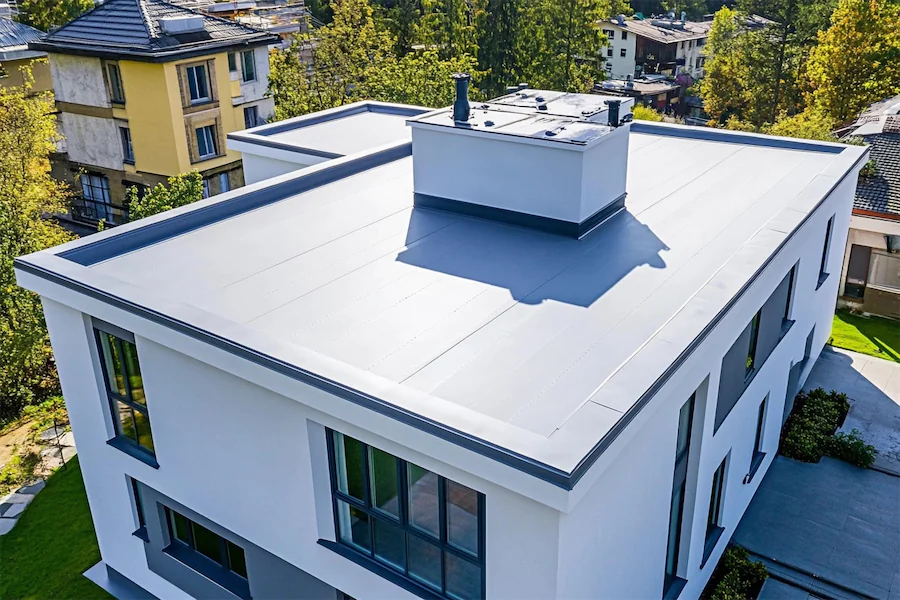Thermoplastic Polyolefin (TPO) roofing is a single-ply membrane widely used in commercial and residential buildings, particularly those with flat or low-slope roofs. Composed of a blend of polypropylene and ethylene-propylene rubber, TPO offers a combination of durability, flexibility, and energy efficiency.
History and Origins of TPO Roofing
Introduced in the early 1990s, TPO roofing emerged as an alternative to traditional materials like polyvinyl chloride (PVC) and ethylene propylene diene monomer (EPDM). Its development was driven by the need for a roofing solution that combined the durability of EPDM with the energy efficiency of PVC. Over the past few decades, TPO has gained significant traction in the roofing industry due to its performance and cost-effectiveness.
Key Features of TPO Roofing
- Energy Efficiency: TPO membranes are typically white and highly reflective, effectively reducing heat absorption and lowering cooling costs for buildings.
- Durability: TPO roofing is resistant to tears, punctures, and impact damage. It also withstands exposure to ultraviolet (UV) radiation and chemical exposure, contributing to its longevity.
- Flexibility: The material’s flexibility allows it to accommodate building movements and thermal expansion without compromising its integrity.
- Cost-Effectiveness: TPO roofing systems are generally more affordable than other roofing options, such as EPDM or PVC, making them a popular choice for budget-conscious projects.
Applications of TPO Roofing
TPO roofing is suitable for a variety of applications, including:
- Commercial Buildings: Ideal for flat or low-slope roofs commonly found in commercial structures.
- Residential Homes: Increasingly used in residential settings, especially for homes with flat roofs or those seeking energy-efficient roofing solutions.
- Green Building Projects: Favored in sustainable construction due to its recyclability and contribution to energy efficiency.
Considerations When Choosing TPO Roofing
When selecting TPO roofing, consider the following factors:
- Quality Variations: As a newer single-ply membrane, TPO formulations are still being perfected, so material quality can vary significantly between manufacturers.
- Installation Expertise: Proper installation is crucial for performance and longevity. It’s essential to hire experienced roofing professionals familiar with TPO systems.
- Maintenance: Regular inspections and maintenance are necessary to address potential issues such as seam failures or punctures, ensuring the roof’s longevity.
Conclusion
TPO roofing offers a compelling blend of energy efficiency, durability, and cost-effectiveness, making it a viable option for various building types. By understanding its features, applications, and considerations, property owners can make informed decisions to meet their specific roofing needs.
